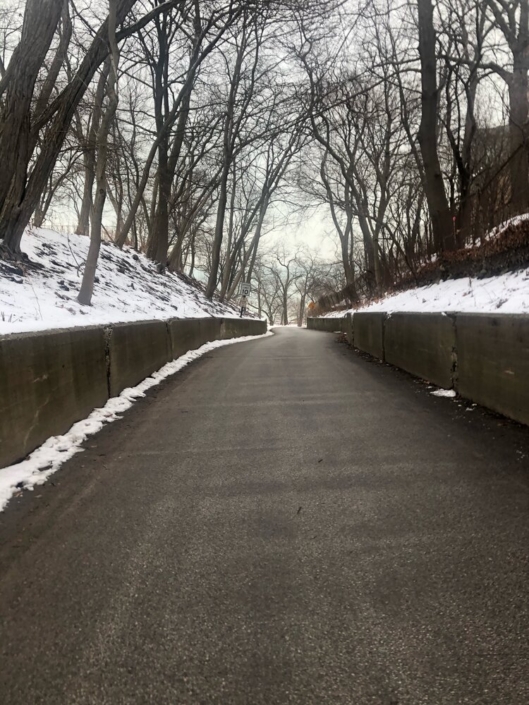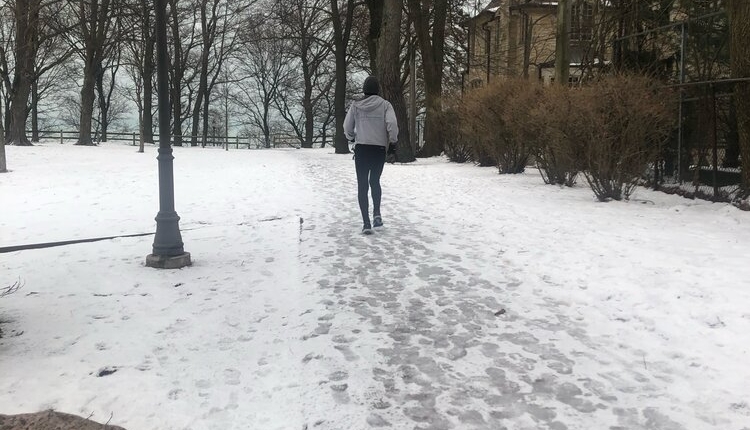I take a walk most mornings. I find that I feel more energized and focused when I walk before work. Today when I went for my walk, I slipped on the ice. What happened? Is it safe to walk outside in the winter? My slip suggests that winter walking is risky. I agree. However, if you keep a few basic principles in mind, walking and even jogging in colder weather can be safe and enjoyable.
Do you have the foundational movements needed for walking?
Are you able to calf raise with a level foot, stand on one leg and step forward keeping your torso centered under your feet? Can you place your foot down mid-foot? Or do you heel strike? Monarch Fitness Coaching offers a ready to walk and ready to run assessment to help you determine if you need to work on any of the foundational exercises needed for walking and jogging.
Know the weather.
My car has an alarm that beeps if the temperature is below 40 degrees Fahrenheit. This morning, before walking, I looked at the temperature, saw that it was 30 degrees Fahrenheit outside, but did not connect the temperature to the possibility that there might be ice on the ground. Had I been aware of the potential for ice, I never would have fallen.
Be able to see if there is ice on the ground or use caution and assume there is ice under you.
I walked this morning at 5:35am. I could not see the ground because it was dark out. I could have also failed to see the ground for the following reasons:
-
Leaves covering the ice
-
Snow covering the ice
-
Black ice
-
Distractions including socializing, day dreaming, window shopping, and looking at a phone
Avoid the ice.
If you see ice, and have an available non-icy route, take it. Consider the time of day you are walking and try to walk when the temperature is warmer. Had I walked after 11:00am this morning, I could have avoided the ice, which had melted.
Change your route. Some sidewalks and paths are better maintained. If needed, skip a day of walking and running, or move your workout to a different day.
If you cannot avoid the ice, change the way you are moving.
If you are jogging or walking briskly, decelerate, stop, and take the following precautions:
-
Move slowly; maintaining your pace is not worth the risk of falling.
-
Keep your feet under you—shuffle.
-
Put your foot down mid-foot, not heel first.
-
As a last resort, externally rotate your hips and toes out. Walk duck-footed.
These four steps would have kept me from slipping this morning. They can work for you, too.
Consider wearing shoes or boots that are designed to grip the ground.
Some shoes and boots have smooth bottoms that slide easily while others have grooves that allow you to grip the ground. There are products designed to pull over boots and shoes. Typically the products have small spikes designed to cut into and grip ice and snow.
Jogging over a patch of ice is risky but possible.
The hardest I have ever fallen on ice was attempting a pivot turn while running. I had the foundational movements needed for walking and jogging, but I did not have the ability to see the ice and adjust accordingly. Consequently, I made the poor choice to do a pivot turn. My foot slid out from under me causing me to slam my side onto the ground. I was embarrassed. When I returned home, I noticed bruising and had some road rash (small painful abrasions on my side). Here is what I should have done:
-
Slowed way, way down
-
Avoided the icy section by slowly jogging around it, or
-
Jogged very slowly on the ice keeping my feet under me (shuffled)
-
Walked the turn
Conclusion
Go outside this winter. Enjoy the fresh air, the snow and the sun. Walk and even jog. Just take a few precautions to avoid slipping on the ice.






